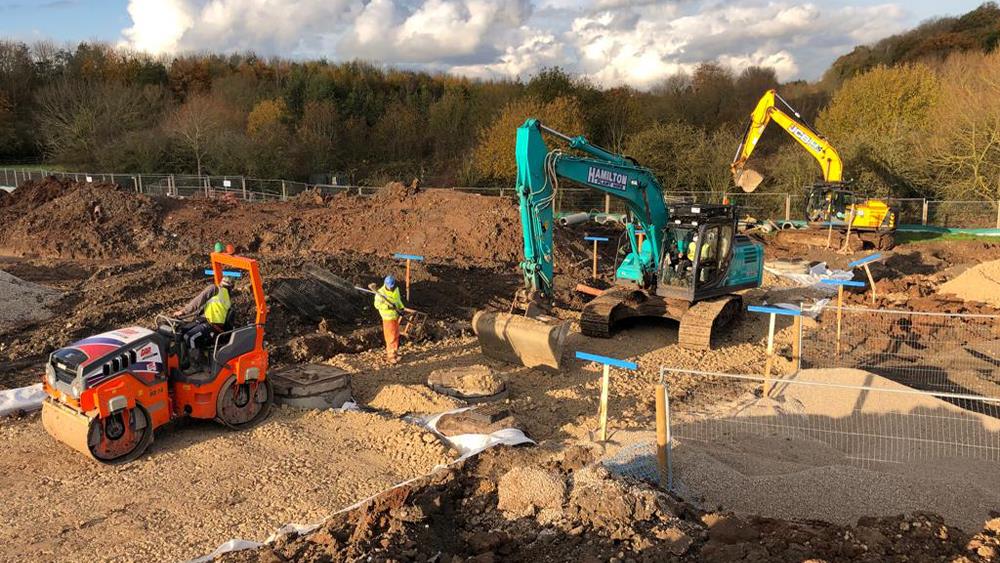

David Fisher, Commercial and Technical Manager at Wrekin, explores the differences between the various types of geotextiles, and explains how merchants can ensure they provide customers with exactly what they need.
Ensuring the right geotextile solution is chosen for each project requires knowledge, expertise and careful consideration. The first thing to be determined is whether it will be used to reinforce the ground, separate aggregates, or provide drainage and filtration. This decision is an essential part of a project’s long-term safety and success.
Geotextile fabrics work wonders for a huge range of purposes - and there is much debate about the respective merits and potential drawbacks of the woven and nonwoven varieties. As such merchants should be able to advise customers and allow them to make a fully informed decision on what suits their needs, budget and timescales best.
Why choose geotextile fabrics?
These synthetic and permeable materials have multiple functions, and are used to improve soil characteristics and speed up the processes in a variety of construction works.
They work by blocking debris or separating aggregates while allowing water to pass through, providing separation, filtration, drainage, reinforcement, and protection. In particular, the woven variety is often chosen by customers to add strength, while the nonwoven is popular because of its filtering qualities.
Both are produced with long-term performance in mind, which can improve a project’s sustainability credentials within a whole-life carbon assessment.
What are the benefits of woven geotextiles?
Few people realise that the woven version will achieve separation in the same way that a nonwoven geotextile can, but in a more cost-effective way – almost half the price, in fact. It is also incredibly strong, potentially more so than a nonwoven option.
Most commonly used for soil separation and the reinforcement of aggregate layers, woven geotextiles provide important sub-structure support. They are a popular choice to use as a separating layer under roads, car parks, industrial areas, and stone foundations for new buildings, as well as access roads and hardstanding areas.
As a reinforcement, the fabric can resist stress, reduce deformations and is a highly effective method of preventing the intermixing of soil and granular fill materials. It is ideal for soil slopes and can create a barrier that absorbs energy to reduce ground erosion.
Woven fabrics can be made to a range of different strengths. For example, standard grades, aimed at providing long-term performance, are available in strengths of up to 80kN/m, and CBR puncture strengths ranging from 1,500N to 9,000N.
If a customer simply wants to achieve separation, then woven fabrics can meet this requirement at a lower price.
Why choose nonwoven geotextiles?
Nonwoven geotextiles are highly puncture resistant, and their permeability and impressive hydraulic properties make them the ideal choice for applications requiring separation and filtration or protection. Places you may need them includes soakways, coastal defences and membrane protection.
There are a multitude of nonwoven geotextiles, each of which are a speedy option to tackle critical separation functions in a wide range of groundworks applications.
All of these are carefully developed to provide engineers with a comprehensive choice of strengths, as well as mechanical and hydraulic properties to meet most on-site requirements. In addition, the needle-punching process used to manufacture them produces a consistent and uniform product – important when aiming to achieve the highest performance.
Typically, nonwoven geotextiles are available in weights from 80g/m2 up to 300g/m2 and CBR puncture strengths ranging from 1,000N to 3,600N. A high-quality superior nonwoven geotextile could also be available in weights from 120g/m2 up to 1,000g/m2 and CBR puncture strengths ranging from 1,400N to 11,500N.
However, it should be remembered that a woven fabric may do exactly the same job but for a lesser cost, especially where a superior strength is required.
Speak to the experts
We know how important it is for customers to find the right solution to all their geosynthetic requirements – and how cost is a major factor.
In most cases, woven fabrics are more durable and stronger than nonwoven fabrics. This is because woven fabrics are reinforced by thread crossing, creating a strong texture.
And while a woven geotextile will achieve separation in the same way that a nonwoven geotextile will, it can do so at a cheaper price point and potentially with higher strength. Armed with that knowledge, merchants can save their clients money and better position their stock. Despite this, we continue to see sales of nonwoven geotextiles where a woven textile could have been sufficient.
For someone not familiar with geotextiles there may seem surrounded by a lot of technical details that make comparison difficult. Furthermore, each project can present its own challenges and what might work well for one may not be ideal for another. That’s why it is imperative that merchants, when unsure, seek expert technical support and advice that will ensure the best results for their customers.